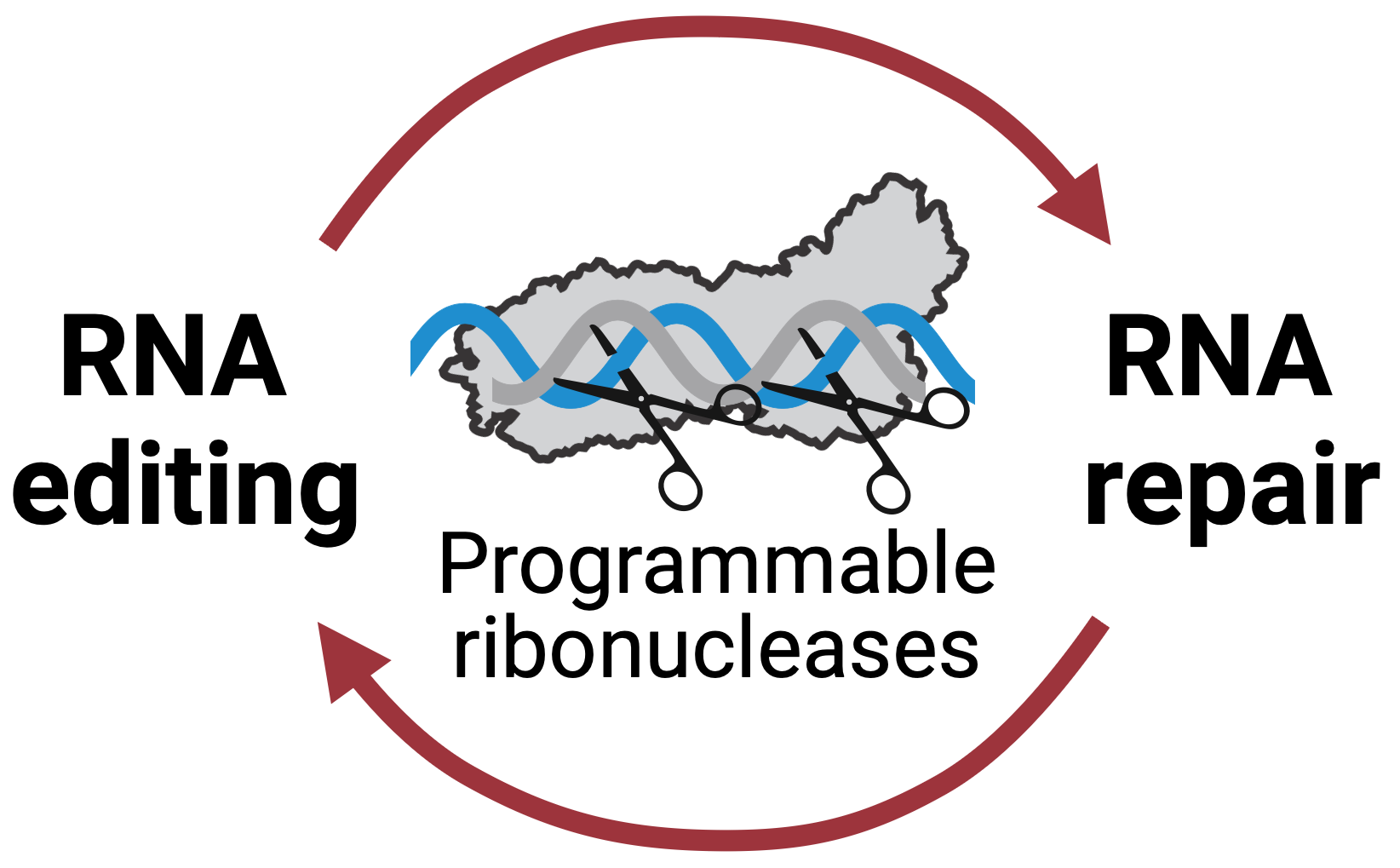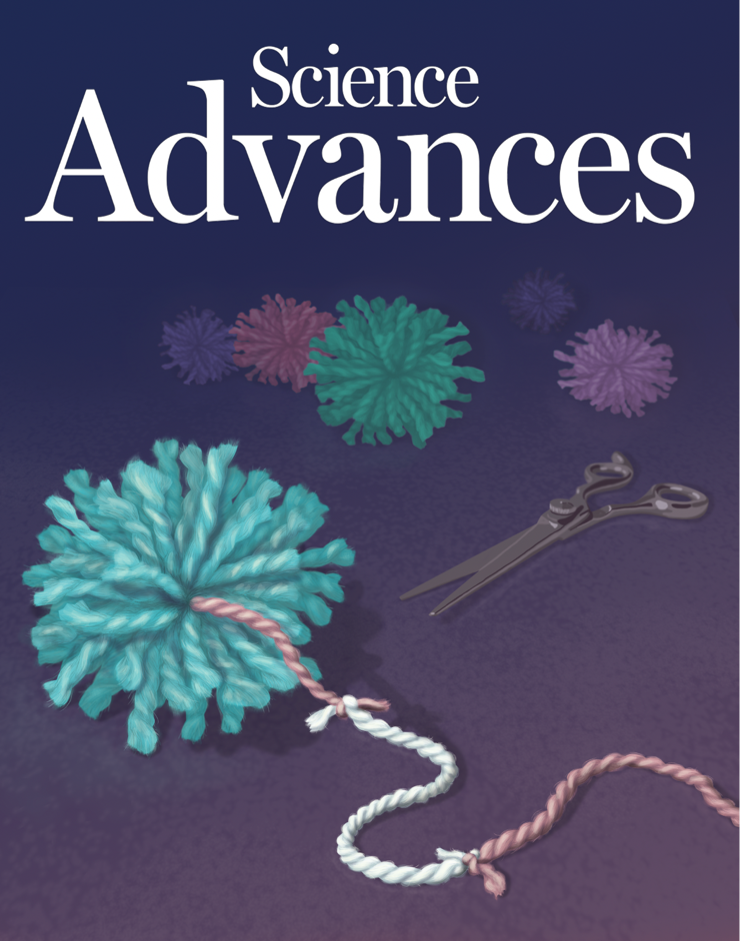Our research

RNA editing & RNA repair
Our goal is to understand the molecular mechanisms that govern RNA repair and translate this fundamental understanding into new RNA editing tools for applications in science and medicine.
We use CRISPR-guided ribonucleases to study how human cells repair RNA and how RNA viruses co-opt these mechanisms for their own benefit.
The biological importance of RNA repair is often dismissed because of the fast turnaround of RNA in the cell. Why bother repairing RNA if cells can synthesize it anew?
We challenge this paradigm and ask:
• Do cells repair broken RNA, how do they do it, and why does it matter? What are the mechanisms, and what is their biological significance?
• Can we co-opt cellular RNA repair to edit information in our genes safely and reversibly?
Human RNA repair
Our understanding of mechanisms that cells use to cope with RNA damage is limited, in part due to the lack of tools to damage RNA without confounding effects on DNA. We have used type III-A CRISPR complexes to make programmable RNA breaks in human transcripts and demonstrated that RNA breaks are repaired in human cells. We leverage this process for programmable RNA excisions to develop applications for treating genetic diseases.

Recombinant RNA technologies
We have combined sequence-specific RNA cleavage by CRISPR ribonucleases with programmable RNA repair to make precise deletions and insertions in RNA. This in vitro recombinant RNA technology enables rapid and facile engineering of RNA viruses, and we use this approach to dissect the effect of recurring mutations in viral genomes on viral phenotypes.

Mechanisms of viral RNA replication
The paradigm “Why repair RNA if you can re-synthesize it?” does not work in the case of RNA viruses because RNA is all they have. We are interested in mechanisms that RNA viruses have evolved to maintain the integrity of their genomes, counteract innate immunity, and promote viral replication.
